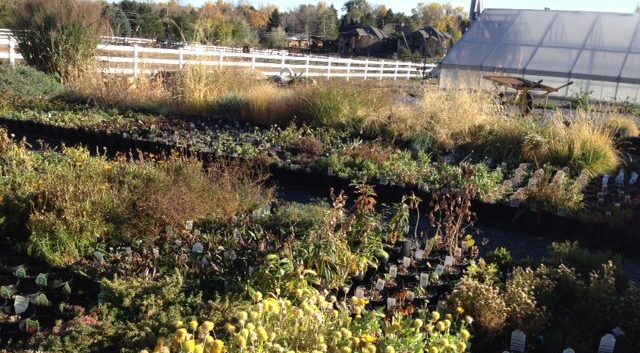Winter watering is advisable with late planted perennials, bare root plants, and perennials located in windy or southwest exposures. Newly planted trees, shrubs, lawns , woody plants, and plants with shallow root systems (i.e. groundcovers).
The result of long, dry periods during fall and winter is injury or death to parts of plant root systems. Affected plants may appear perfectly normal and resume growth in the spring using stored food energy. But plants may be weakened and all or parts may die in late spring or summer when temperatures rise.
The Denver Metro area is experiencing another warm, dry autumn! The Average Annual precipitation is 14.3” and to date only 11.19” of rain has been measured. Fall weather usually is marked by dry air, relatively low amounts of moisture and swings in night and day temperatures. Normally the Denver area will receive a average of another 2″ of precipitation between now and the end of the year. Which will still leave us below average for the year.
Monitor weather conditions and water during extended dry periods without snow cover – one to two times per month. Often there is little or no snow cover to provide soil moisture from October through March.
Watering Guidelines
Water only when air temperatures are above 40 degrees F. Apply water at mid-day so it will have time to soak in before possible freezing at night. A solid layer (persisting for more than a month) of ice on lawns can cause suffocation or result in matting of the grass. Plants receiving reflected heat from buildings, walls and fences are more subject to damage. The low angle of winter sun makes this more likely on south or west exposures. Windy sites result in faster drying of sod and plants and require additional water. Lawns in warm exposures are prone to late winter mite damage. Water is the best treatment to prevent turf injury.
Exposed sites are more subject to winter freezing and thawing. Our persistent freeze/thaw process opens cracks in soil that expose roots to cold and drying. Also, weakened plants (due to lack of winter watering) may be subject to insect and disease problems.
Methods of watering trees include: sprinklers, deep-root fork or needle. Be especially careful with soil needles, also known as deep root feeders. Some people insert these well below a 12 inch depth, placing water out of reach of tree roots. Soil needles should be inserted at an angle to a depth of 6 to 8 inches. Leave the needle in place for 3 to 5 minutes with water turned on low to moderate pressure. Water the area under the branches in at least twelve sites for a medium sized or larger tree. Disperse water sites evenly within the circle bounded by the dripline. For new trees, water all four sites at least 3 feet from the trunk (stem)., soaker hose or soft spray wand. Apply water to many locations under the dripline and beyond if possible. If using a deep-root fork or needle, insert no deeper than 8 inches into the soil. As a general survival rule, apply 10 gallons of water for each diameter inch of the tree. For example, a two-inch diameter tree needs 20 gallons per watering. Use a ruler to measure your tree’s diameter at 6″ above ground level.
Apply 5 gallons two times per month for a newly planted shrub. Small established shrubs (less than 3 feet tall) should receive 5 gallons monthly. Large established shrubs (more than 6 feet) require 18 gallons on a monthly basis. Decrease amounts to account for precipitation. Water within the dripline of the shrub and around the base.
Be sure to mulch trees and shrubs to retain moisture. Place a layer of mulch 3”-4” around the base, but leave a 6” distance between the trunk/lower branches and the start of the mulch. Perennials benefit from this practice, too! Apply the mulch, if not already placed, by the hard freeze. This will alleviate small creatures from making their homes in the mulch while our weather is unseasonably warm. Mulch for perennials can be placed 1”-2” away from base of the plant.

